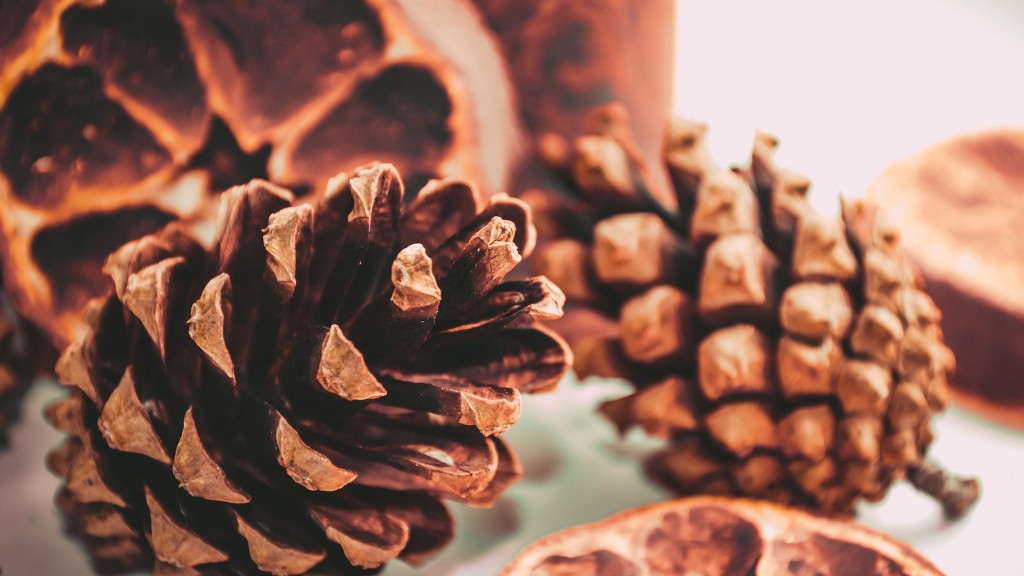A lemon tree (Citrus limon) usually flowers twice a year in the spring and late summer. The flowers are borne in small clusters and the individual blossoms are white with pink tinges. The blooms often have a faint scent and typically appear from March to June in the Northern Hemisphere and from October to December in the Southern Hemisphere. The flowers are short lived but are replaced by small, yellow fruit. The tree enjoys a sunny and warm position to thrive and flowers best when temperatures range between 50 and 65°F (10 to 18°C).
Lemon trees need plenty of moisture to flower and fruit so it’s important to check the soil regularly. A lemon tree will benefit from the occasional feed of rich compost or balanced liquid fertilizer. Light pruning in late winter or early spring can also help stimulate flower and fruit production. Finally, it is important to keep the tree well watered in hot, dry weather ensuring drip irrigation systems stay operational.
Lemon trees need lots of sunshine and warm temperatures; therefore, sheltered sites or positions protected from cold winter winds are most suitable. Unless grown in containers, poor quality soil can be improved by adding rich organic matter when planting. Container-grown lemon trees will need extra water and protection against extreme weather such as frost.
Citrus limon trees often begin producing fruits at their four or five-year mark, although they can start producing fruit as early as two. The lemon tree can either be a self-pollinator or require a bee such as a honey bee to ensure the flowers are pollinated. Several lemons will appear when the flower petals drop, them start to grow in size over five months until they reach maturity.
Harvesting
When harvesting lemons, take a small amounts throughout the year. The tree is likely to produce different fruit sizes and fresh fruits can be picked as early as April and may last until mid-October in some cases. The fruits are ready to identify by their size and when the color changes from green to yellow. However, the fruit can stay on the tree for a while and may turn slightly brown on the outside over time but remain consumable. Once picked the lemons should be used quickly within a week or two of harvesting.
Pests
A lemon tree may suffer from infestations by different types of pests. Normally the majority of garden pests can be tackled through good cultural practices. Examples are avoiding leaf-wetness by ensuring trees are not watered in the evening, and pruning of damaged or dead branches. If chemical treatments are required it is advisable to keep this to a minimum.
Diseases
Disease usually occurs in lemon trees when the foliage is exposed to poor air circulation caused by over-crowded conditions or when an excessive amount of moisture is present or when temperatures drop below 50°F (10°C). Common fungal diseases are scab, canker and cracking. Other diseases include gummosis and citrus greening. It is important to identify signs of disease and treat it appropriately.
Propagation
Propagating lemon trees can be achieved in several ways. The most popular way is by growing lemon trees from cuttings. The cutting oozes sap when cut, allowing it to form a seal, ensuring it doesn’t dry out. It is better to dip it in rooting hormone before planting in potting soil. Using this method ensures quick root formation and healthy growth when providing the best climatic conditions.
Fertilizers
Fertilizers play an essential role in the growth of a lemon tree. A healthy lemon tree will benefit from an annual feed in spring and summer with a balance fertilizer with a slow release. It is recommended to use organic fertilizer as these slowly release nutrients into the soil allowing it to slowly absorb over time. Excessive application of fertilizer should be avoided in order to prevent nitrogen-burn of the leaves.
Watering
Adequate moisture is crucial for the growth of a lemon tree as it helps to prevent inadequate growth, wilting and even death. In general, light and frequent irrigation is recommended and normally carried out depending on the climate and soil type. In areas with regular high temperatures, 3 to 4 inches of water twice a week should be applied. If the temperatures drop below 50°F (10°C) in winter the frequency can be decreased. Heavy soil with good drainage requires less water.


